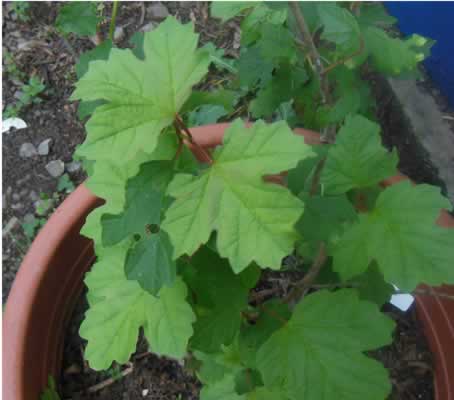Cramp Bark Viburnum opulus

Viburnum opulus
- Common Names
- Cramp Bark , Stagbush, sweet viburnum, guelder-rose, water elder, arrowwood
- Botanical Name
- Viburnum opulus
- Family
- CAPRIFOLIACEAE
Medicinal Uses & Benefits of Cramp Bark
![]() How to Use|
Side Effects |
Plant & Garden|
How to Use|
Side Effects |
Plant & Garden|
- Medicinal Uses: * Dysmenorrhea
* Menopause
* Menorrhagia
* Pregnancy/Childbirth
- Properties: * Antispasmodic * Astringent * Hypotensive * Nervine * Phytoestrogen * Uterine Tonic
- Parts Used: Bark
- Constituents: scopoletin, bitter principle (viburnin), triterpenoid saponins, salicosides, resin, plant acids (including valeric acid), tannin, arbutin.
How to Use: Cramp Bark
Black haw Viburnum prunifolum and cramp bark V. opulus act in similar ways and both have a long history of use by Native and pioneer women. These herbs help to relax the uterus which can help prevent miscarriages in pregnancy, and to relieve uterine cramps and painful periods. (Gladstar, Rosemary) When a threatened miscarriage is due to uterine irritability, anti-spasmodic herbs such as Jamaican dogwood (Piscidia erythrina) and crampbark (Viburnum opulus) may be useful, as may tonic herbs such as raspberry (Rubus idaeus) leaf and star grass (Aletris farinosa) root. (ABC) These traditional uses are born out with modern chemical analysis, both viburnums contain phytochemicals that facilitate uterine relaxation, two of which (aesculetin and scopoletin) also work against muscle spasms, and the pain-relieving salicin in the herb is also closely related to aspirin. (Duke,James, Ph.D.)
Preparation Methods & Dosage :Tablets, tea, tincture. Viburnum can be mixed with other herbs such as ginger, motherwort and/or Valerian to relieve cramps.
Cramp Bark Remedies
Cramp Bark Side Effects: Some evidence suggests cramp bark may aggravate tinnitus. Not recommended for use for those with kidney stones.
Plant Description

Viburnum young leaves
- Plant Class: Shrub
- Etymology: The red fruits bear some resemblance to the cranberry and are likely the source of the common name American cranberry bush. though of course, quite unrelated to the true Cranberry.
- Flowers/Fruit/Seeds: The flowers on the outside of the cluster are sometimes an inch in diameter, but those on the inside are smaller. The red fruits, which ripen rather late in the season and remain on the bush for some time, are roundish, sour and contain a round flat stone.
- Parts used: bark
- Leaves: 3-palmate lobes, broadly oval, coarsely toothed leaves coarsely toothed leaves are usually smooth on the upper surface, but with the veins on the lower surface somewhat hairy.
- Habit: grows from 8 to 10 feet high with branches generally erect and smooth.
- Flowering Season: Flowers appear in June, followed by red fruits.
- Distribution: Viburnum opulus L. var. americanum Aiton is native to North America. The highbush cranberry is on the threatened or endangered list in PA,OH, IN.
Regional Traditions :North America *
Related Species Black haw, Viburnum prunifolium, is a white flowered shrub native to North American that grows up to 30 feet tall and is found in wooded areas and beside streams. It is sometimes used in place of or in addition to crampbark.
History and Traditions & Folklore
Crampbark has a long history of use by Native Americans for gynecologic problems.-
Herbs Useful and Contraindicated in Pregnancy
Yarnell, Eric. Botanical Medicine in Pregnancy and Lactation Alternative & Complementary Therapies. April 1997:93-100
American Botanical Council
When threatened miscarriage is due to inappropriate uterine irritability, spasmolytic herbs such as Jamaican dogwood (Piscidia erythrina) and crampbark (Viburnum opulus) may be useful, as may uterotonic herbs such as raspberry (Rubus idaeus) leaf and star grass (Aletris farinosa) root.
- Sievers, A.F. 1930.The Herb Hunters Guide. Misc. Publ. No. 77. USDA, Washington DC











